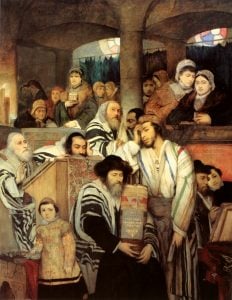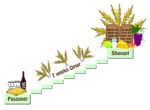
What is a Soul? III. The Many Souls of Man
…[H]e who tries to cure the soul, wishing to improve the moral qualities, must have a knowledge of the soul in its totality and

…[H]e who tries to cure the soul, wishing to improve the moral qualities, must have a knowledge of the soul in its totality and

In the biblical story of the creation of Adam, the Torah states: Then the Eternal G‑d formed man of the dust of the ground, and

Yom Kippur means “The Day of Atonement.” Some view it as a frightening day full of regrets of the past and anxiety for the future.

We are quite familiar with space—we move freely in space back and forth; we concur space on land and beyond; we reclaim land from sea;

There is a Biblical Commandment to count the days between the Passover and Shavuot, the “Feast of Weeks” (a.k.a. Pentecost). We start counting on the

Now the Serpent was more cunning than any beast of the field which the Eternal G‑d had made. (Genesis 3:1) When G‑d placed Adam

As always in science, every answered question breeds new questions. Now that we understand that the Tree of Life and the Tree of Knowledge are

The Special Theory of Relativity, published by Albert Einstein in 1905, was a game changer. It ushered the era of new physics dubbed by some
Listen, O heavens, and I will speak! And let the earth hear the words of my mouth! (Deut. 32:1) In this Torah portion Haazinu, Moses

Sefer Yetzira speaks of three dimensions: Olam, Shanah, and Nefesh (Sefer Yetzirah, 6:4.) Olam means “world” and signifies space. Shanah means “year” and signifies the dimension of
The Torah portion, Re’eh, talks about the Sabbatical Year—in Hebrew, Shemitah—the Seventh year. When the Sabbatical year comes, all loans are forgiven, and Jewish servants

Yesterday was the 9th day of the month of Av or, in Hebrew, Tisha B’Av. Usually, Tisha B’Av is marked by mourning and fasting. Yesterday,
In the Torah portion Emor (Leviticus 21:1–24:23), we are instructed to abstain from work every seventh day on Shabbat. Next week’s Torah portion, Behar, continues
Last week Torah portion, Emor, speaks about the prohibition of working on Shabbat. In fact, the Talmud enumerates precisely 39 categories of labor forbidden on

The mezuzah is one of the few miẓvot ([divine] “commandments”) for which the Torah states its reward. In this case, the reward is a long
And G‑d opened the mouth of the ass, and she said to Bilam: “What have I done to you, that you have struck me these
Speak unto Aaron, and say unto him: “When thou lightest the lamps, the seven lamps shall give light in front of the menorah.” (Num. 8:1)

There is hardly a Jewish holiday more widely celebrated than Passover (Pesach). Jews of all denominations, affiliations, and levels of religious observance, if any at